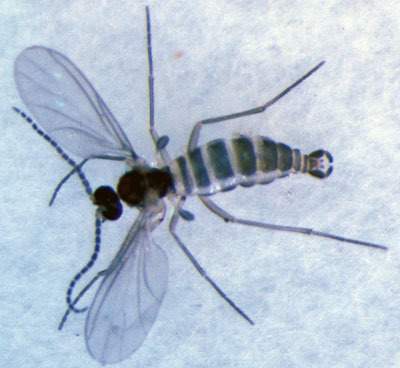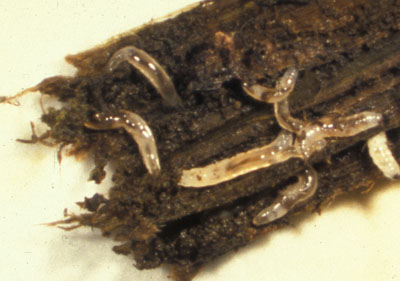Fungus gnat
July 1, 2015
Chewing pests
Fungus gnat adults are located primarily near the surface of growing media. Each female can lay up to 200 eggs in the cracks and crevices of the growing medium. They are highly attracted to growing media that contain high amounts of organic matter. The larvae feed on plant roots, reducing the plant’s ability to take up water and nutrients. In addition, larvae may tunnel into plant stems near the growing medium surface, causing stunting, wilting and even death.

Fungus gnat adults are black and winged, with long legs and antennae. Each front wing has a characteristic Y-shaped vein.
Management
Avoid overwatering plants – allow the top 1 to 3 inches of growing medium to dry. Insecticides, particularly insect growth regulators, can be applied as a drench to the growing medium to control larvae. Applications of the beneficial nematode Steinernema feltiae to the growing medium are effective in controlling the larvae. Rove beetles, Atheta coriaria, are predators that may be effective against fungus gnat larvae. Both the larvae and adults are predaceous.

Fungus gnat larvae are white, translucent and legless. They possess a distinct black head capsule.
Print a PDF of this page: Fungus gnat



 Print
Print Email
Email



